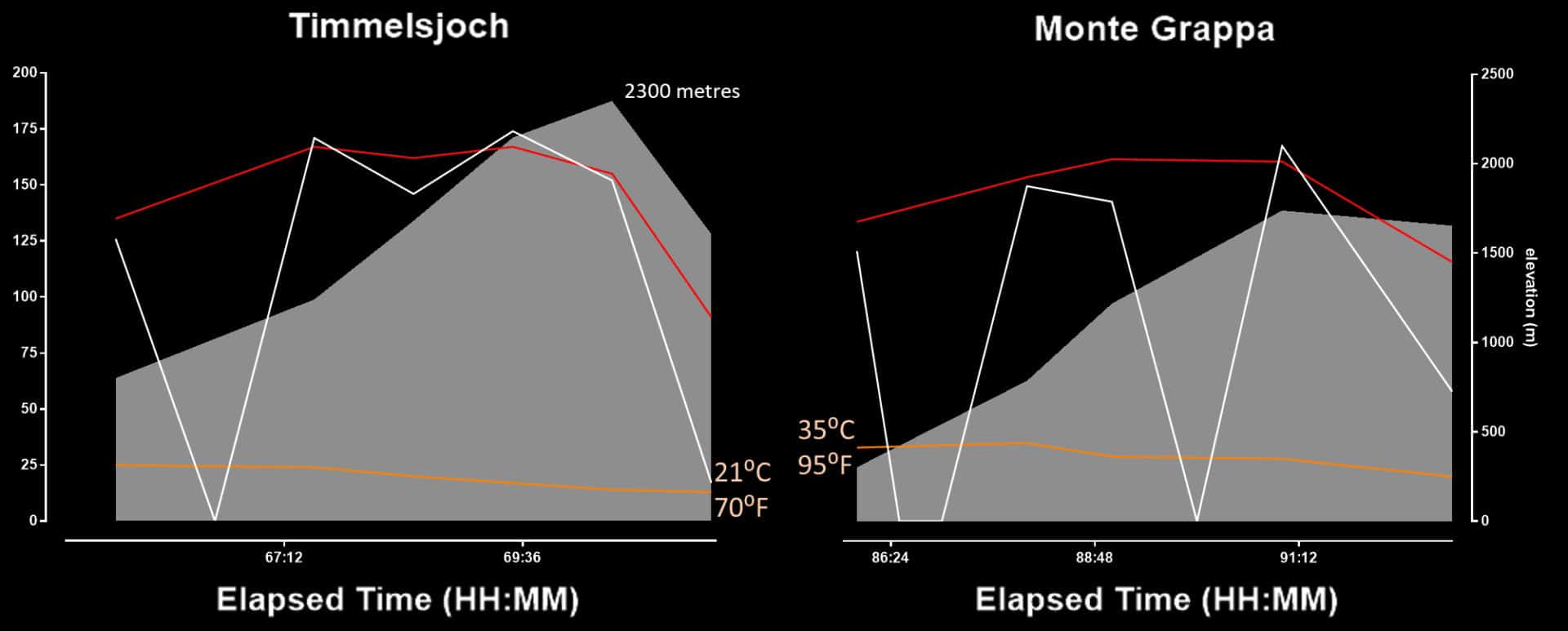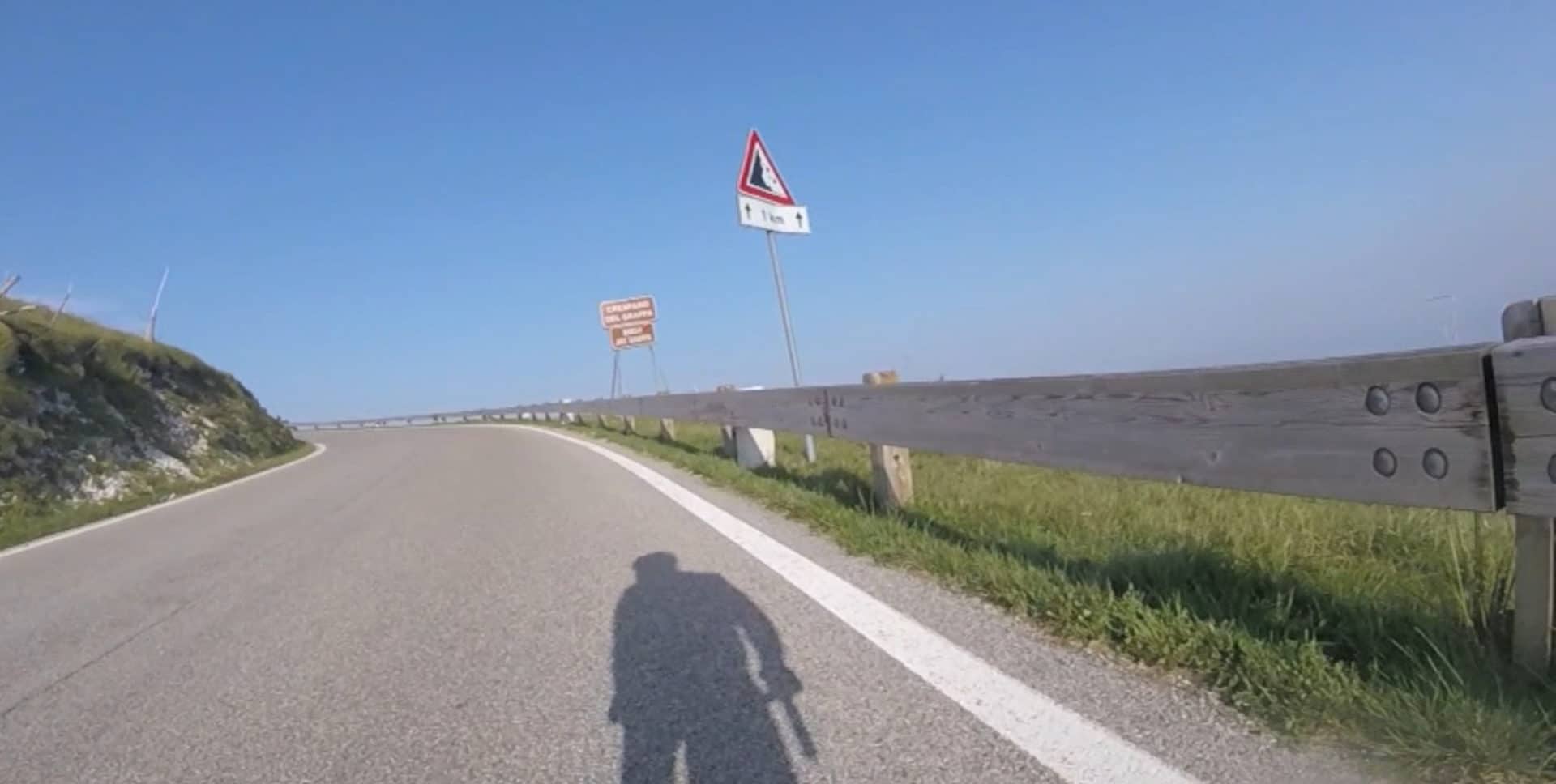By Daniel Brayson, King’s College London, @DrDanBrayson
A word of advice to budding ultra-cyclists: don’t climb steep hills in a heat wave! High temperatures came to define a large portion of my cycling race across Europe, especially the further eastwards I rode. On many days, the mercury pushed above the 40⁰C (104⁰F) mark and even reached 50⁰C (122⁰F) one day. The biological effects of physical exertion in high ambient temperatures are important to understand, especially if you plan on doing something like the Transcontinental Race.
Slowed down by Lucifer
Over exertion in the heat can increase core body temperature to an abnormal level and lead not only to a significant reduction in performance but more importantly to heat-related illnesses, such as heat stress, exhaustion and stroke. While these differ in severity, they share symptoms, including muscle weakness, dizziness, nausea and loss of appetite. I was acutely aware of the dangers of over-exerting myself in the heat, but because I was in a race, I did it anyway: competition is known to cause competitors to focus on the race so much they ignore sensory cues! That’s how I ended up climbing mountain roads that were not tree lined, in more than 40⁰C (104⁰F). Climbing up against the pull of gravity means the body has to work harder and consequently, generate more heat. You also go slower uphill, meaning there is limited moving air to evaporate sweat and cool the skin. The data I’ve collected show how temperature affected my performance.

Take a look at these two climbs (in grey), that I did quite early in the race, on consecutive days: Timmelsjoch in Austria followed by Monte Grappa in northern Italy. If we look closely we can see that on average, temperature (orange) was much higher when I climbed Monte Grappa than when I climbed Timmelsjoch. And whilst heart rate (red) is similar, power output (white) is much lower during the climb to the summit of Monte Grappa – I even stopped completely to cool down. A decrease in power output could be attributed to fatigue from the first climb, except that I did much better on another huge climb even later in the race… when the average temperature was much lower!
[youtube https://www.youtube.com/watch?v=KqiqGwErOcI&w=560&h=315]
Your body in a heat wave
At ‘normal’ temperatures, 10-25⁰C (50-77⁰F), exercise feels comfortable; if temperature increases to over 35⁰C (95⁰F), the same intensity of exercise gets more difficult and cannot be maintained as long. Why? In both settings, exercise increases the amount of heat produced by our metabolism, but the way the body copes with it is affected by the temperature. In lower temperatures there is a large difference between the body temperature (high) and ambient temperature (low). Heat naturally travels down a thermal energy gradient towards the lower temperature environment so the body gets rid of the extra heat easily (using convection, conduction and radiation for those of you who did GCSE Physics). In addition, and to facilitate greater heat loss, sweating allows the surface of the skin to cool when sweat evaporates; this process relies on the energy state change: evaporation of liquid sweat into gas uses up heat, leaving the skin cooler. Now, when the ambient temperature is above the core temperature the human body, the usual processes of convection conduction and radiation happen very slowly, if at all. The body then relies a lot more on sweating; however, sweating too much causes dehydration and excessive loss of salt and minerals called electrolytes, with severe implications for performance and health (Cheuvront et al., 2010).
For example, in hot conditions blood vessels near the skin dilate, allowing blood to flow closer to the surface of the skin to cool it down – hence the red face. Heart rate increases to help fill these now larger blood vessels, yet because of sweating and dehydration, blood volume and blood pressure go down, making it even harder to fill the heart: the volume pumped per heart beat actually becomes smaller! This creates stress on the heart whilst it works hard to pump blood to all of the body’s tissues and organs. These constraints definitely place a limit to how much humans can safely exert themselves in the heat (Gonzalez-Alonso et al., 2008)!

Beating the heat
It is worth noting that a person’s ability to cope with high temperatures during physical exertion is not set and can be improved by training. For example, a two-week acclimation protocol of training at 40⁰C (104⁰F) ambient temperature can lead to increased sweating, retention of electrolytes by sweat glands and expanded plasma volume, all of which compensate, to a degree, for the problems highlighted above. But it’s important to note that you would need to drink more water, not less. It is a common misconception that acclimatising to heat means having to drink less water!
As for me, heat wasn’t the only thing that gave me trouble during the Transcontinental Race… tune in next week for a new episode.
Make sure you follow the blog and subscribe to our Youtube Channel to keep up with the Ultra Cycle Diaries. Check back every Wednesday for a new blog and video!
Read Next Instalments
The Ultra Cycle Diaries – Fatigue
https://www.physoc.org/blog/the-ultra-cycle-diaries-fatigue/
The Ultra Cycle Diaries – Nutrition
https://www.physoc.org/blog/the-ultra-cycle-diaries-nutrition/
The Ultra Cycle Diaries – The Finish Line
https://www.physoc.org/blog/the-ultra-cycle-diaries-the-finish-line/
Read Previous Instalment
The Ultra Cycle Diaries – Setting off on the Transcontinental Race
https://www.physoc.org/blog/the-ultra-cycle-diaries-setting-off-on-the-transcontinental-race/
References
Cheuvront SN, Kenefick RW, Montain SJ & Sawka MN. (2010). Mechanisms of aerobic performance impairment with heat stress and dehydration. J Appl Physiol (1985) 109, 1989-1995.
Gonzalez-Alonso J, Crandall CG & Johnson JM. (2008). The cardiovascular challenge of exercising in the heat. J Physiol 586, 45-53.
